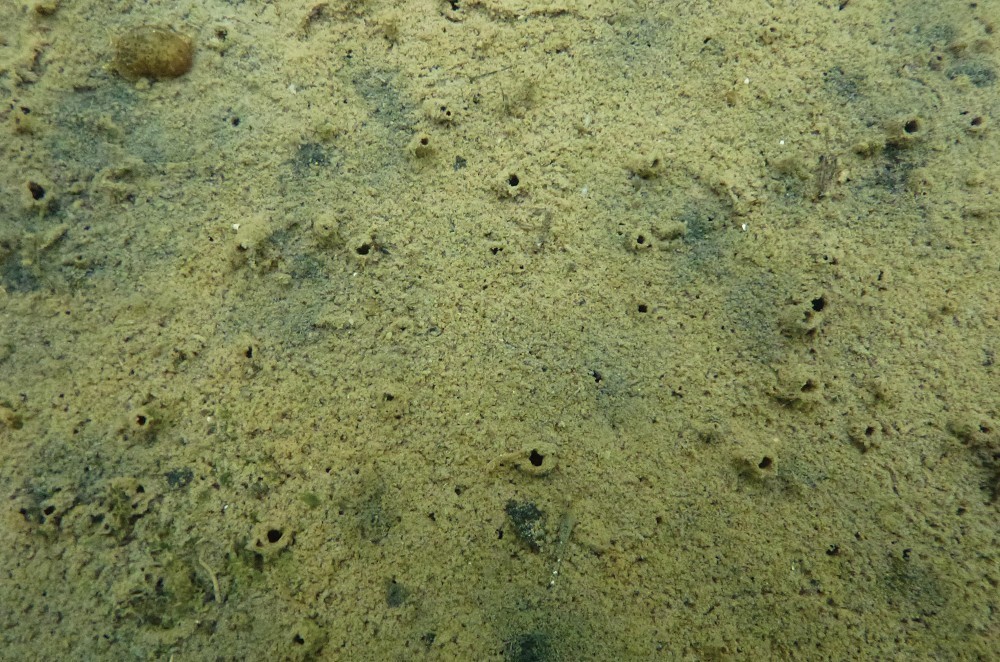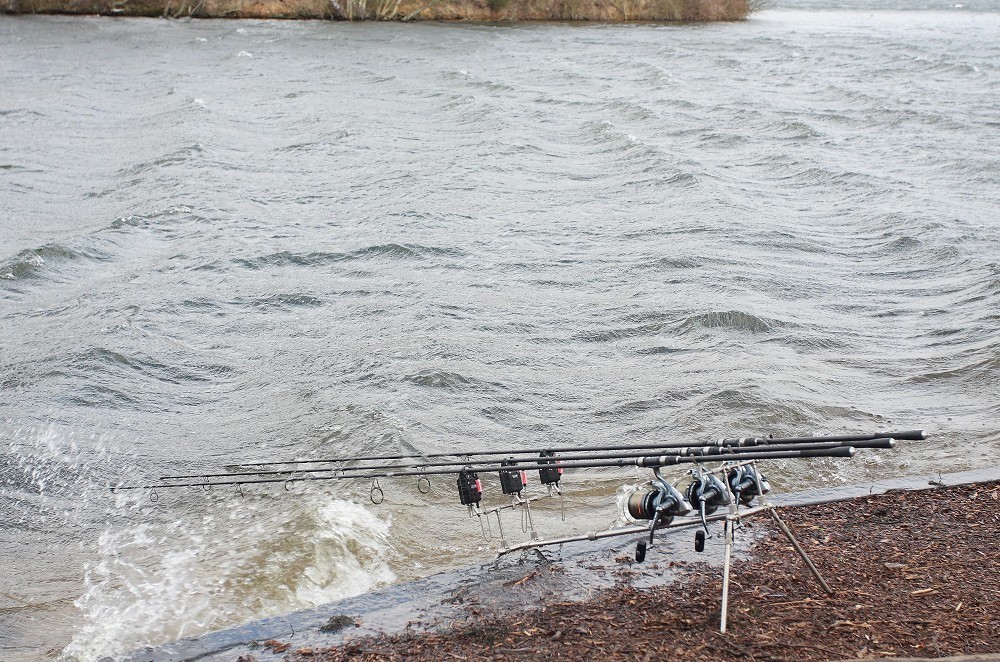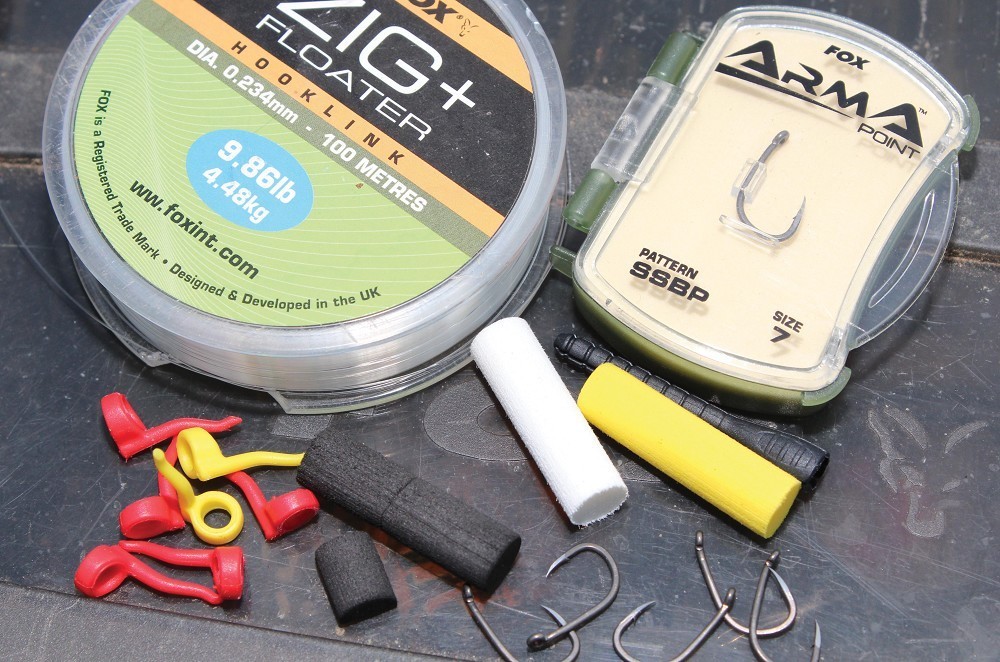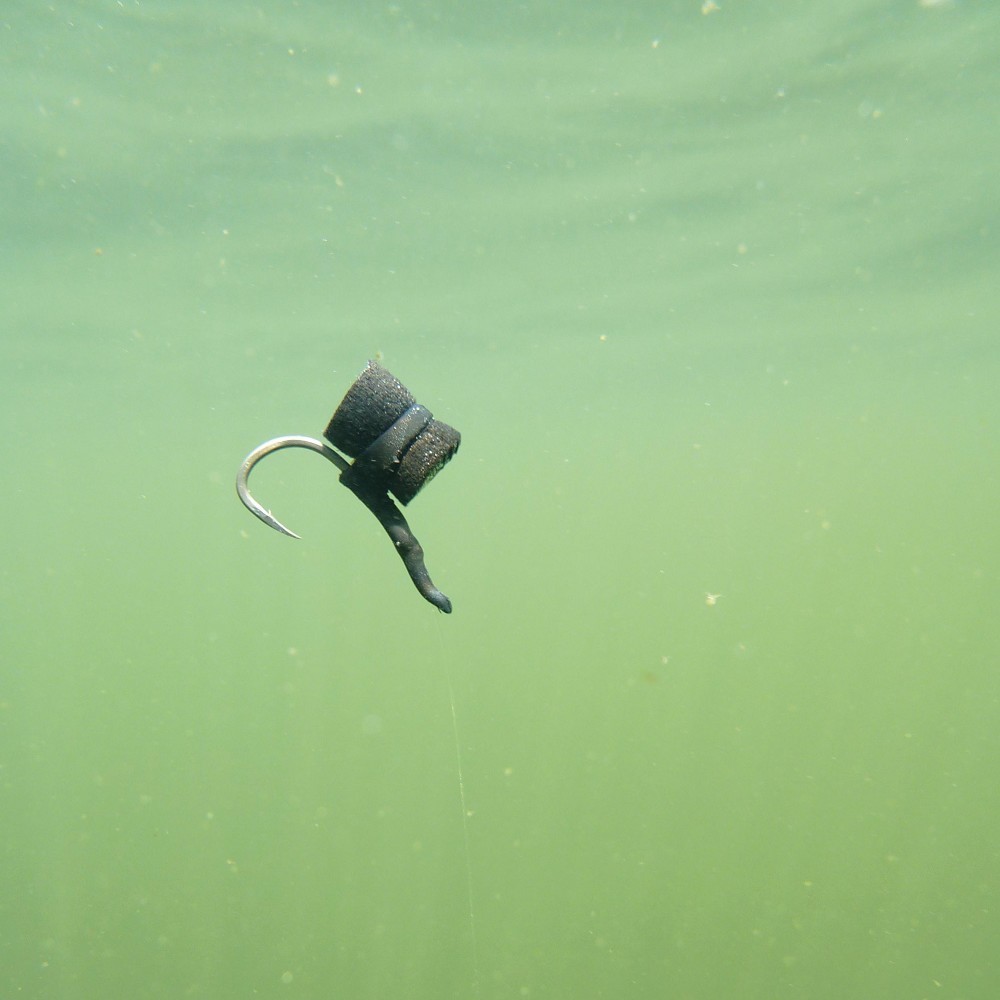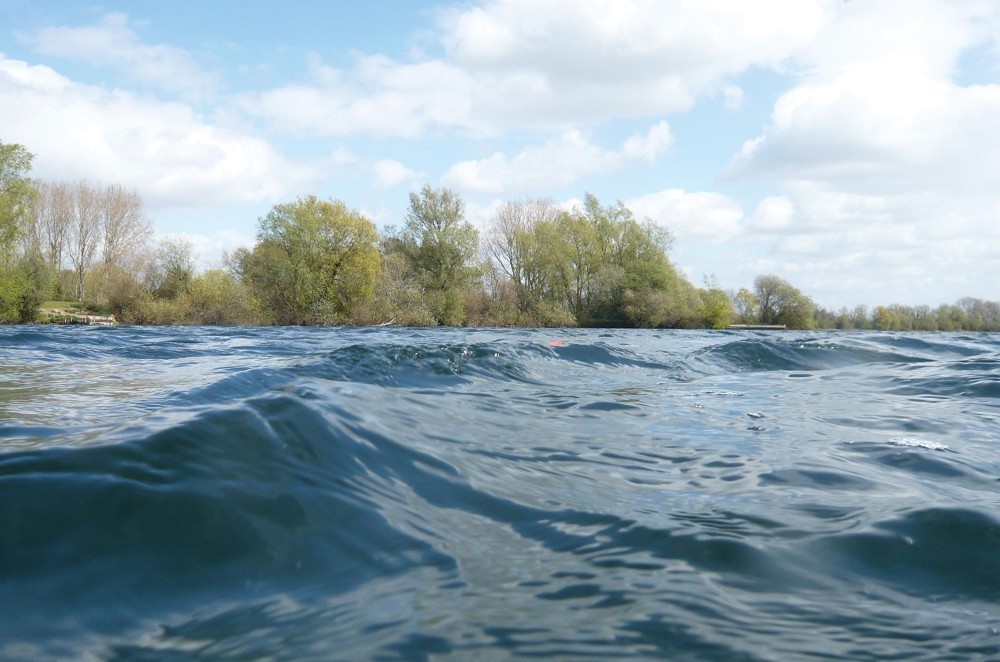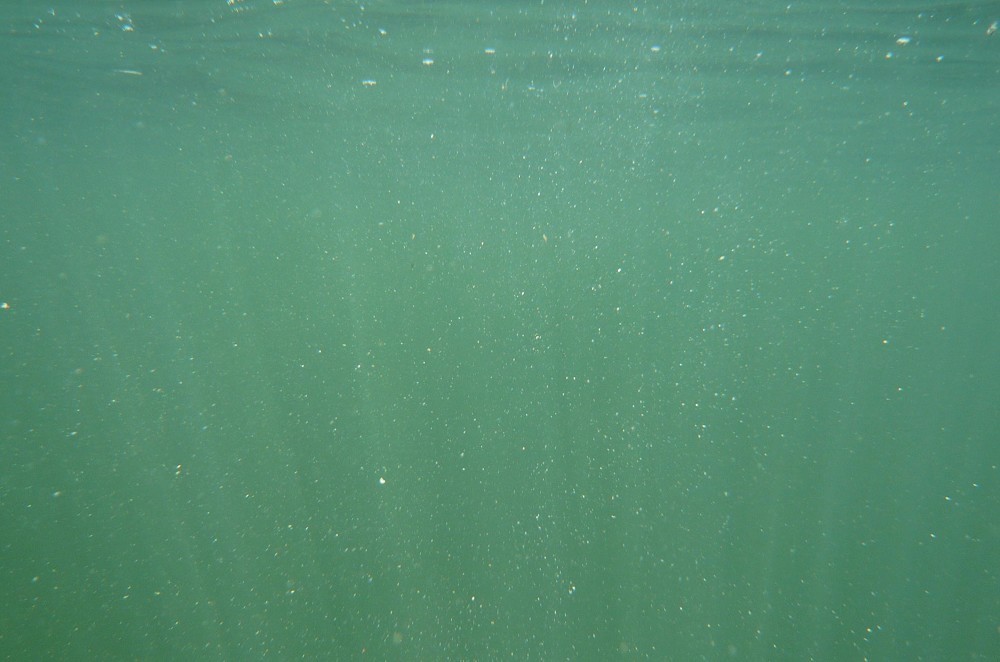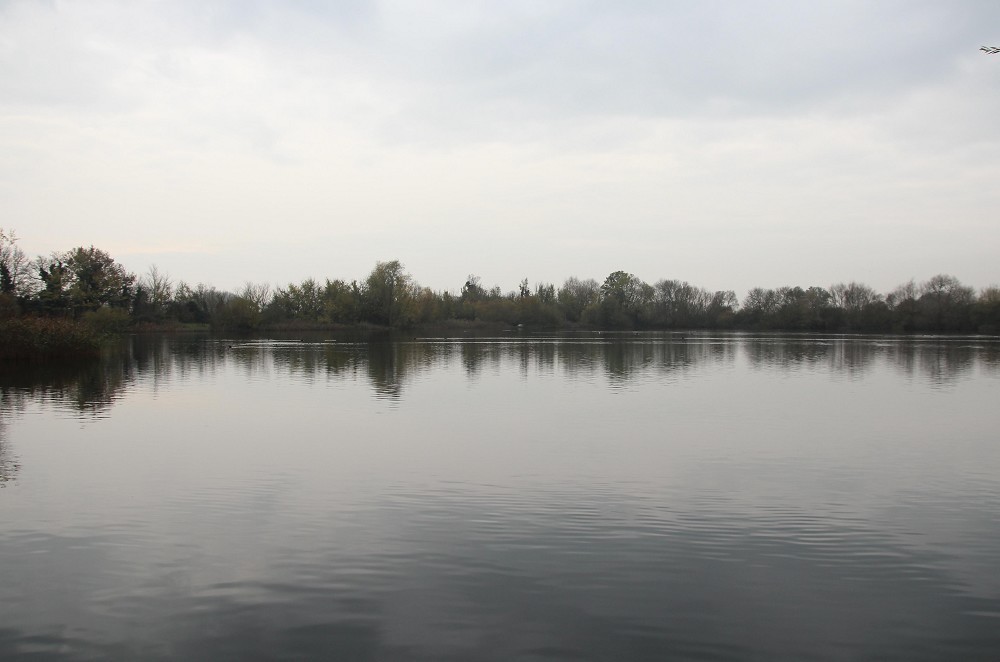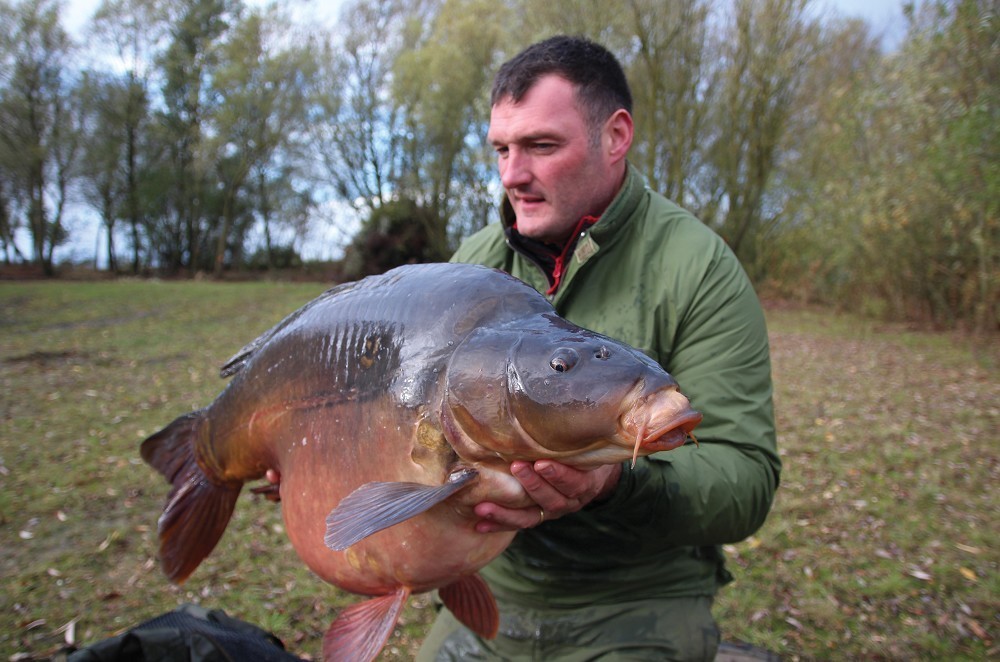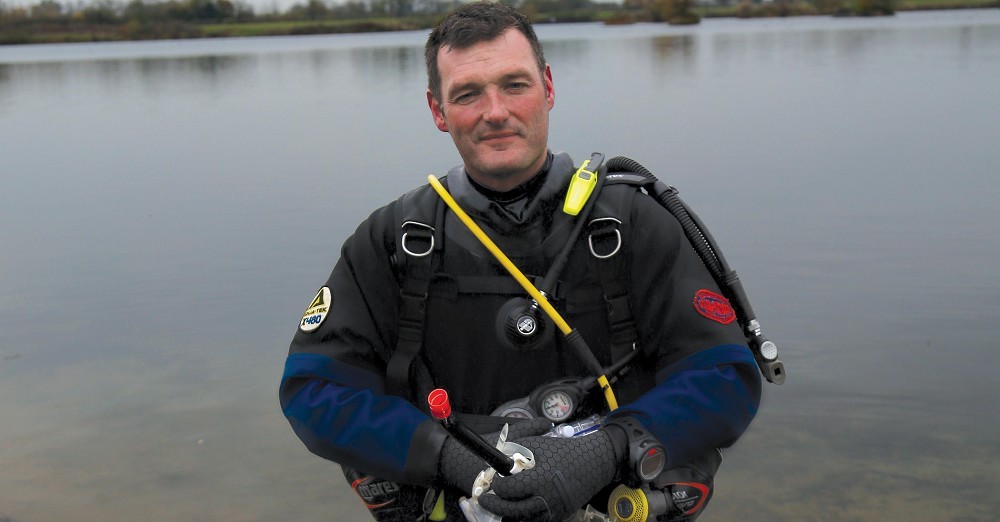
Below The Surface: Above and below
Your winter carping made easier...
Despite his professional outer shell, Hughesy is a bit of a nature and weather nerd. Being the outdoorsy type that he is (as well as diving he’s into climbing mountains and other adventurous stuff like that), the weather plays a massive part in what he does and how he does it. He’s also a bit of an expert when it comes to winter carping and has probably caught more big fish in the colder months than he has in the hot ones. When many people are hanging up their carp rods, he’s dusting his off and getting ready to make the most of quieter banks and in his own words, “easier fishing”. We got our man to put two and two together and make our winter carping a lot easier…
Weather to fish
I’ve borrowed this title from an old chap called Jack Meyler, who, having had a career as a WW2 fighter pilot, was even more of a weather nerd than I am. His life depended upon it, as indeed has mine on occasions, and back in the day he wrote a book about how the weather has affected his angling. It taught me a lot and it doesn’t take the brains of Einstein to work out that the weather has a massive part to play in our success rate. This time of year in particular there are windows of opportunity that can lead to success and periods whereby the fish don’t want to play ball, seemingly irrespective of what you do to tempt them. There is however usually a way – not necessarily an orthodox one – but there is and fishing in the winter is far from orthodox, especially if you speak with carpers from times gone by.
It’s fair to say that I love my winter carping. The periods between November and the end of March are fantastic times of year to be out on the banks and in my eyes they are incredibly productive, especially if you apply a bit of thought. Now I’m no scientist, and am certainly not educationally qualified in anything that I am about to discuss, save for the fact that I love applied science and also have had a significant amount of practical experience. Sometimes you can throw all the books out of the window and you will catch whatever, but ask any military strategist and they will tell you that you are much more likely to win a battle if you know a little bit about your enemy and also the ground upon which you are to do battle. A boxer wouldn’t step into a ring without studying his opponent, and one of the first things that a football manager will do when he knows his fixture list is to study the opponent. We can do this too, and one of the biggest things that affects both the enemy and the battle field is the weather.
There are effectively four aspects to what we are looking at. We call weather the elements, so lets look at the four main elements: earth, wind, fire and water in a little bit more detail both from above the surface and also from below so we can see what their underwater effect is.
1 Earth: Above
It goes without saying that you really, really, really need to know what you are fishing over. I’ve said that three times to emphasise how important it is, but if you don’t know what you are fishing over your rig choice might be wrong, your bait application could be miles out and you may not even be presenting a bait at all. The solution is, of course, to feel your lead down. Hit the clip, hold the line, do whatever you prefer, but make sure you know what is happening when your lead touches down. That way you are not wasting time and effort. I’m not saying thrash the water to a foam with a float, that would be counter productive, especially in winter, but feeling the lead down can find you fish as well as tell you what the bottom is like.
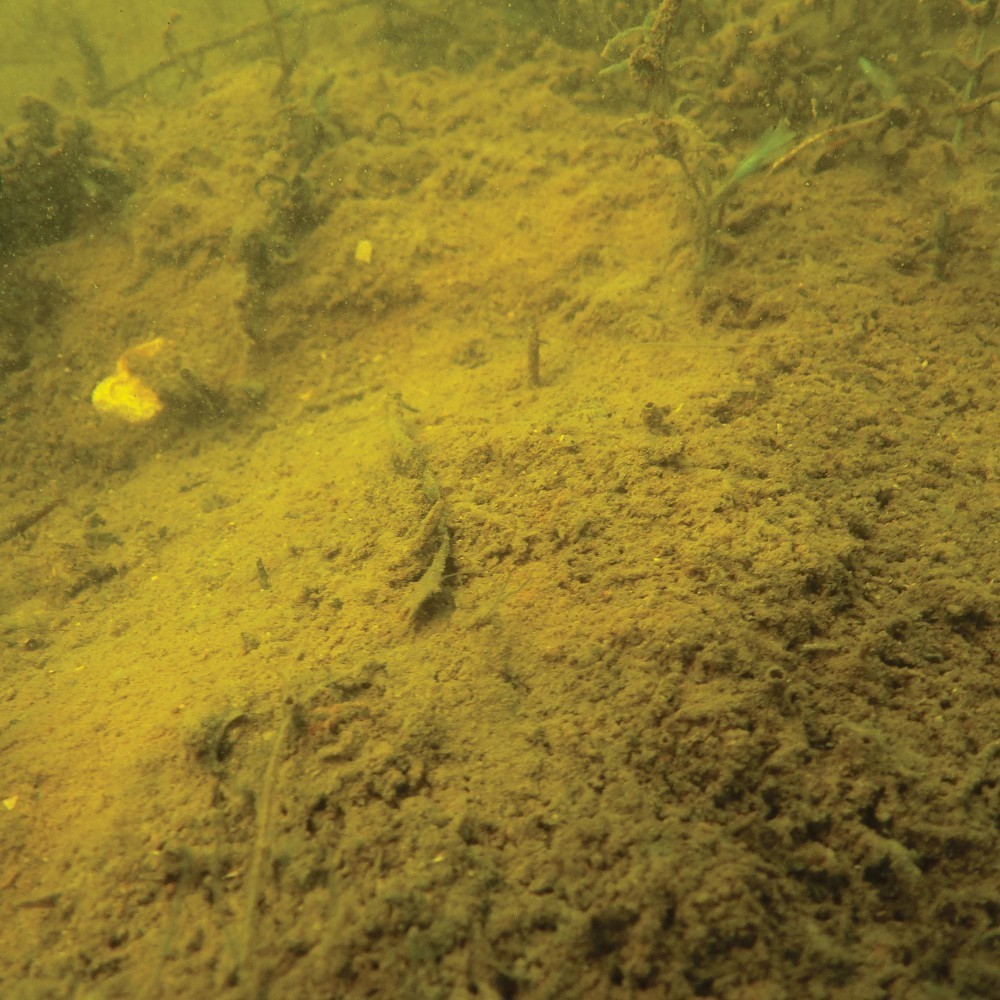 In the Essex area the silt tends to be a yellow/orange colour. In the Midlands it’s more red and Oxford and the Cotswolds is bright yellow to grey
In the Essex area the silt tends to be a yellow/orange colour. In the Midlands it’s more red and Oxford and the Cotswolds is bright yellow to greyThey tend to be off the bottom and relatively lethargic at this time of year so feeling the lead is a great location tactic. One of the things that the carp tend to do at this time of year is stay grouped together. They also like a feature, such as a bar or an area where they feel secure where they can move up or down in the water column relatively comfortably. If the bar is steep and you are applying food, take into consideration how far they roll down the bar. Round balls roll very easily and if you are baiting the top of a bar in 6ft of water, they could well be ending up in the trough at 12ft. You present your bait in six and the fish have all followed the freebies down to 12. Result: blank. Chop your baits up and stop ‘em rolling. Common sense and an amazing improver of catch-rates.
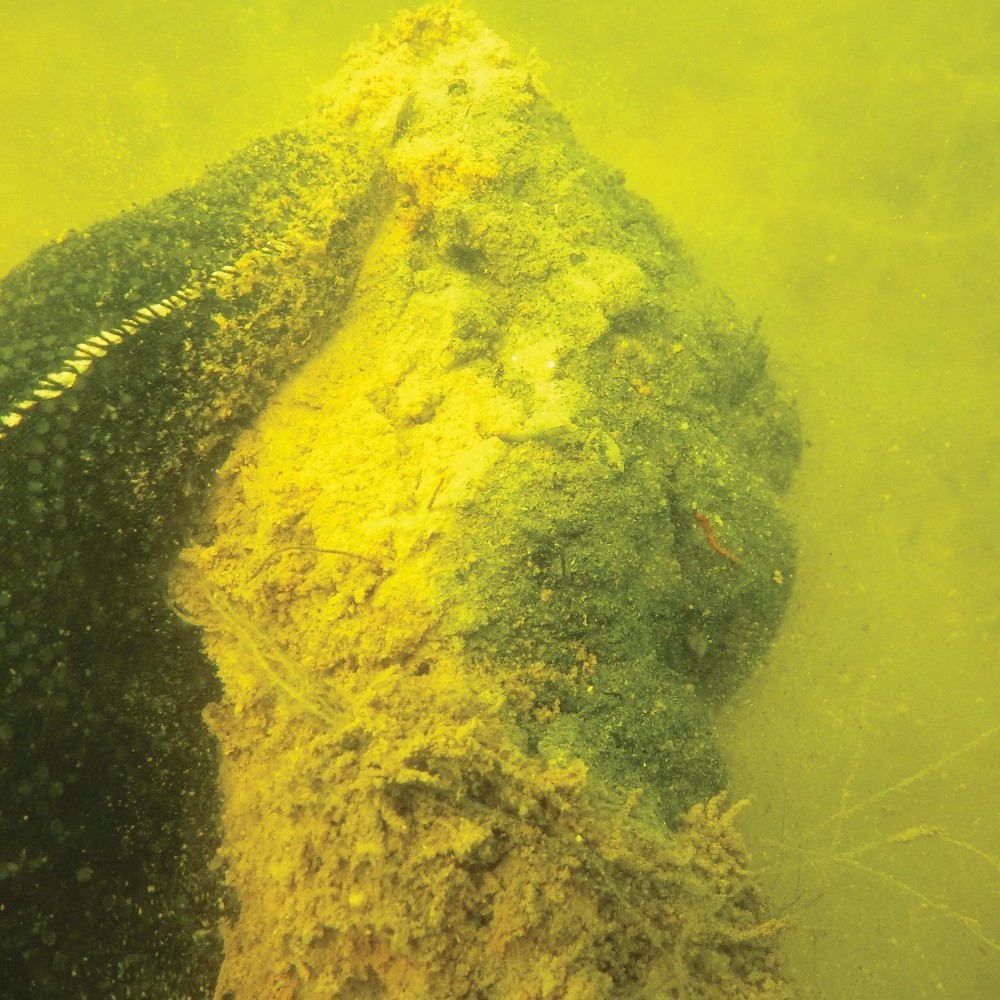 A perfect illustration of the surface covering of silt. The top is yellow/orange and the dead stuff underneath is black. Check the bloodworm out too!
A perfect illustration of the surface covering of silt. The top is yellow/orange and the dead stuff underneath is black. Check the bloodworm out too!2 Earth: Below
I’ve done a few slide shows recently and one of the things that has raised the most reaction is that silt is not black. Now it may be that some of the guys at the show have not been following Below The Surface. It may be that some have simply missed it, or worse still ignored it, but I’ll repeat again. If you are fishing the majority of waters, the silt you are fishing over is not black. Shropshire and Cheshire’s silty meres are slightly different but on the whole, the gravel pits of this country are not black. Wraysbury is grey and Baden has a very dark older part but if you want to see the colour of the silt you are fishing over, look at the local stone around you. Cotswold and Oxford silt tends to be slightly yellowy in colour. Essex pits are slightly more orange. Coming up through the Midlands it turns slightly more red and in the South West there’s a lot more blue grey. Black silt is the stuff underneath the surface layers. The anaerobic stuff that is dead of oxygen and the surface silt is always lighter. Quite why manufacturers still label products as ‘Silty Black’ I don’t know. It generally isn’t, unless you’ve stomped in it and mixed the underlying stuff up with the surface stuff.
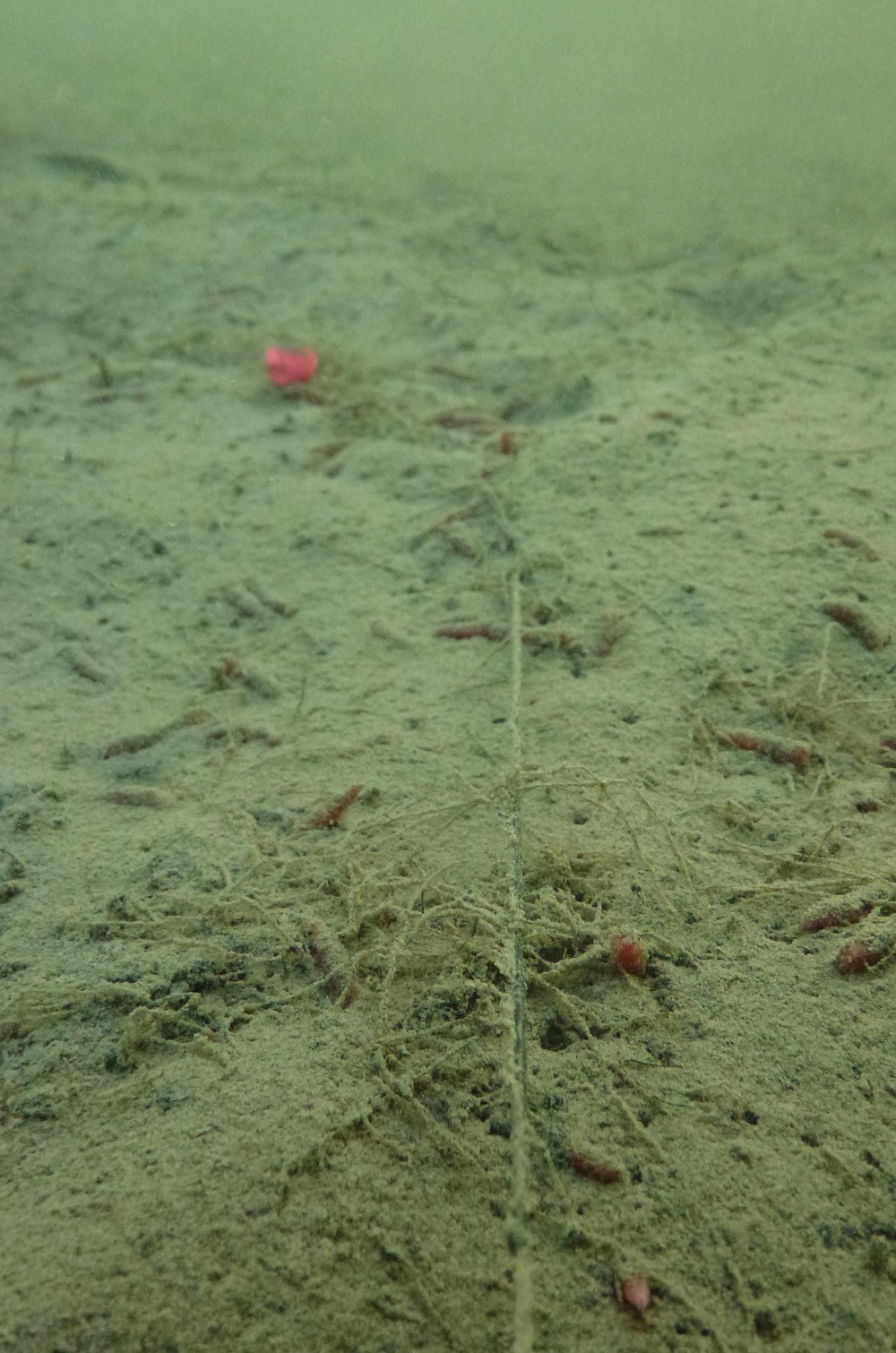 Be careful when using maggots not to just pile them in and forget them. They need topping up or will get covered in silt dust
Be careful when using maggots not to just pile them in and forget them. They need topping up or will get covered in silt dustOn that note I’d like to talk about bloodworm, and maggots too for that matter while we are at it. I’ve never seen bloodworm waving around part way out of the silt as suggested by some. I’m not going to say that it never happens, and the odd worm will pop to the surface of the silt of course, but in 11 years of diving it’s not something that I have come across very often. They live in the darker stuff underneath the surface layers as that is what they eat. If you pull bloodworm back on the hook it wasn’t having a wander along the gravel… it was in silt, and reasonably deep stuff too.
The other one is maggots. Reds stand out a lot more and are better because they are significantly more visual. Whites almost disappear on most surfaces as they are not truly white but more “white with a shade of maggot” colour. They also cannot burrow into silt. They tend to drown pretty quickly and once submerged want to leg it as fast as possible rather than dig themselves deeper into danger. Of the maggots that I have seen dumped into water, especially cold stuff, a bags-worth will spread out to about a dinner plate size with the odd Olympic maggot making it a bit further away, but the majority simply give up a lot sooner. It also pays to regularly re-bait with them rather than pile a whole expensive bucket in as once the fish start feeding on them they kick up a lot of silt and cover the buggers over.
3 Wind: Above
The basics of a North and Easterly wind being cold and a South and Westerly wind being warm and wet are pretty damned obvious. The former cross the warm Atlantic before they get to us, the latter the landmass of Europe, which in summer is hot and in winter is bloody cold. A bit like having a lesson on how to fill a PVA bag, I’m not going to look at the basics any further. If you’re reading ‘Ology you’re already beyond that and have a brain cell or two to rub together. What is important about wind is the different types of wind and also the air pressure systems that they bring with them.
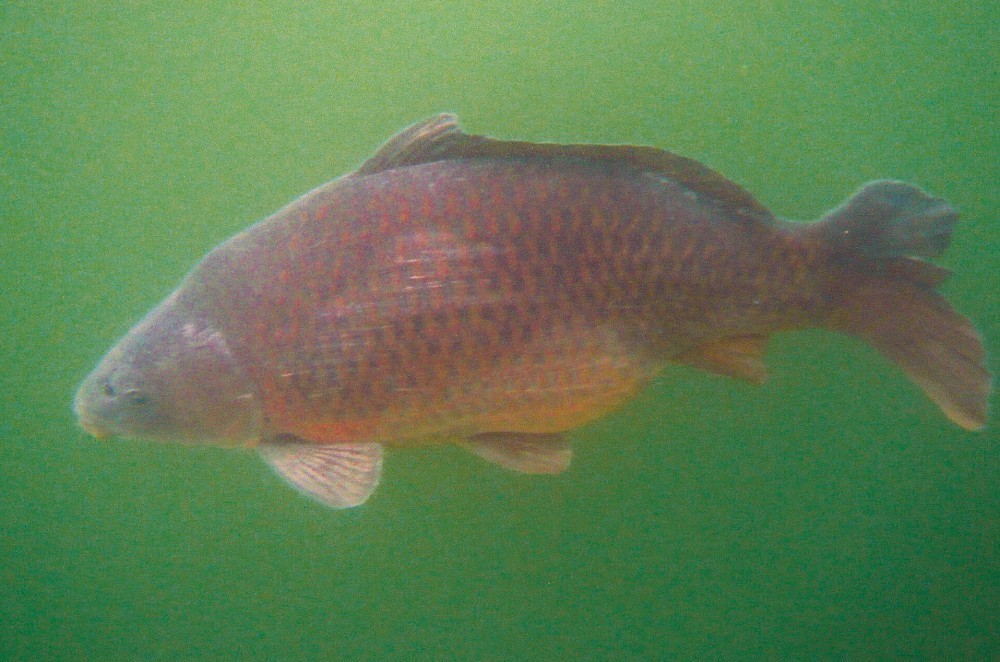 If it’s a high pressure day the chances are they will be higher up in the water. Zigs are the order of the day
If it’s a high pressure day the chances are they will be higher up in the water. Zigs are the order of the dayProtracted periods of the same pressure system are not the best of conditions as it is the differences that stimulate the fish into movement… and if they are moving they are feeding. With a high or rising barometer there is a greater or increasing pressure of the air upon the water, the surface of which takes in oxygen from the air. This in turn pushes more oxygen into the water, especially at the surface thus making it more comfortable for the fish in the upper layers, especially in the warmer months. This is one of the reasons why they tend to come off the bottom and up in the column during high pressure. It doesn’t apply so much to oxygen in the winter (although it was worth mentioning for the summer period) as colder water holds more oxygen, but high pressure also squeezes the gas inside the fish a little more than low pressure. It’s therefore more comfortable for the fish the higher they are in the water as the gases in their swim bladders are squeezed less. They still have to feed of course, and if they are off the deck then that means Zigs. Some of the top lads in the country swear by Zigs in the winter. They are more visible because of the clearer water, the fish tend to be up in the layers and static a lot more, and once you’ve found the depth they are lying up at, it can be like clubbing seals.
With a low or falling barometer there is a reduced pressure on the water making it more comfortable to be lower in the water. The dropping pressure actually sucks oxygen out of the surface layer as it drops (although there tends to be a replacement in the form of rain and wind action which accompanies the lows) and also tends to push the fish down. The practical advice therefore is to fish a Zig up in the water on high pressure days and a bait towards the bottom on lower pressure days.
There are lots of different types of wind and we’re not talking the beans kind here. Thermal winds are caused by differences in temperature between high and low ground and also large areas of water and cause air to be sucked up into the atmosphere and are particularly prevalent anywhere near the sea. They can be diurnal (e.g. different directions in the day and night) because of the cooling difference between land and water (water cools slower), but it’s the bigger winds and the pressure systems that make the real difference to us. Make sure you know the difference.
There are a couple of useful rules to remember when looking at the short-term forecast, even if it’s only to decide when to pack up…
A: If it’s wet and the clouds seem to be moving against the surface wind, the wind will die down and the rain will ease.
B: If it’s dry and they are doing the same, there’s a very good chance it will rain.
4 Wind: Below
Below the surface the wind has significantly less of an effect but almost as much of an overall impact. For a start there is very little buffeting around even in the windiest of conditions. Once you get more than a foot below the surface the presence of the wind is almost non-existent, either in noise or wave movement. I’ve heard people talking about their Zigs being buffeted around in the waves, but unless they are fishing just below the surface this simply doesn’t happen. There may be a slight lean with tow, but certainly no buffeting. Its mixing effect however is more obvious. At the windward end of the lake the surface layers will be “turned over” and mixed with the deeper water which will then sink and work its way back up the lake. Just like with a weather front, the cooler parts will sink and the warmer parts will rise although if the weather has been cold for a while, the wind will probably warm the surface layers if it is strong (it’s likely to be warmer than water) so the warmer water can stay above the cooler stuff and the lake will stratify.
You also get tow which has an effect on the underwater currents in the lake. This effect is also dramatically over estimated by most people I speak to. It will not affect the drop of most baits other than perhaps maggots which tend to hang in the water longer than most baits. What is more important is surface drift that can pull your spod quickly off course. If it’s windy, be as accurate as you possibly can and use a Spomb wherever possible if you want a clean drop.
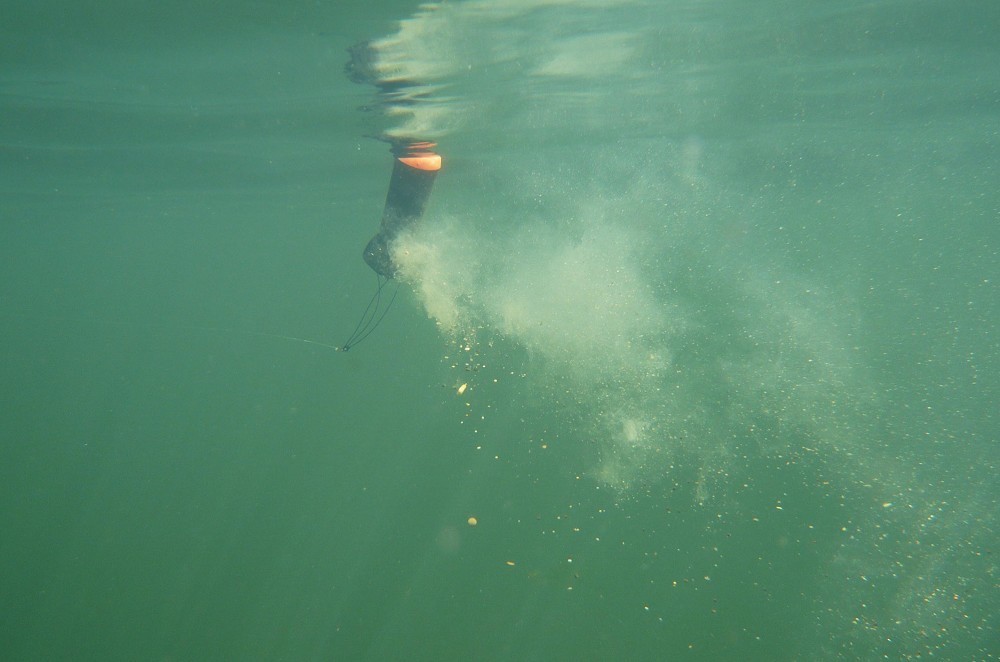 Tow has an effect with light baits such as Zig cloud and maggots, but it’s drift that has more of an effect
Tow has an effect with light baits such as Zig cloud and maggots, but it’s drift that has more of an effect5 Keep an eye on the water
I can think of a few times where a small change in the weather has had a massive effect on captures. A few years ago at Abbey lakes there had been virtually nothing out for a fair while. Two lads had been on for two weeks and had landed just a couple of fish. I got there and things were not looking good with doom and gloom in the camp. Then the weather changed and all hell broke loose as a big Atlantic depression and strong southwesterly blew in. Across one night I landed nine of the most stunning fish to 57lbs and it was and still is one of my biggest hits to date. It all went quiet again after the low had moved through and the pressure rose again.
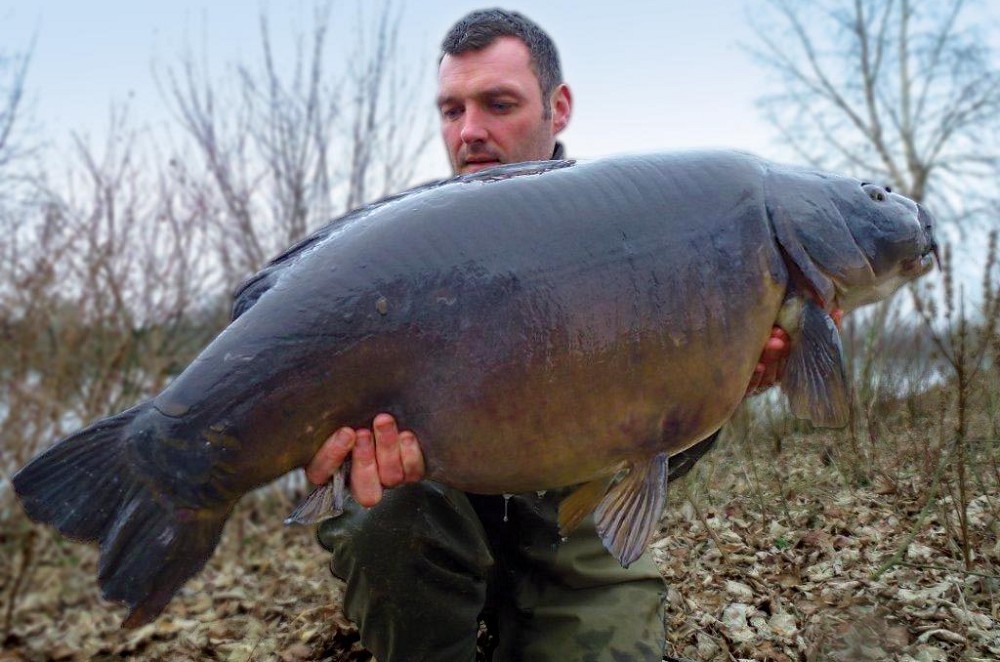 Winter: my favourite time of year and great for big fish. This stunning creature is the Ace of Spades at an ounce under 50lbs
Winter: my favourite time of year and great for big fish. This stunning creature is the Ace of Spades at an ounce under 50lbsIn fact, this November I had a similar experience in the UK at Holme Fen in Cambs. I’d been diving in the day and the water was cold. The chill had got into me and the first night dropped to -4. It was flat calm, high pressure clear skies and generally grim. The second day was just as bad and I started diving already cold. By lunch I’d made my mind up there was no way I was stopping another night but whilst having a lunch break I saw a ‘mackerel sky’ above. If you see a mackerel sky then do everything that you can within your powers to get fishing. They precede a change in weather system and are usually followed by a warm front within a few hours. This meant that the air was likely to warm up, the cloud come in, and the barometric pressure drop thus pushing the fish down and encouraging them to feed. I stayed, and knowing that this was likely to happen gave them a fair amount of food. I was rewarded, by not one but two bites. Both of them over 40lb, meaning my cold weather campaign had started very, very well indeed. The temperature didn’t drop below 12-degrees that night, a 16-degree difference and that memorable catch was purely down to me seeing the mackerel sky at lunch time.
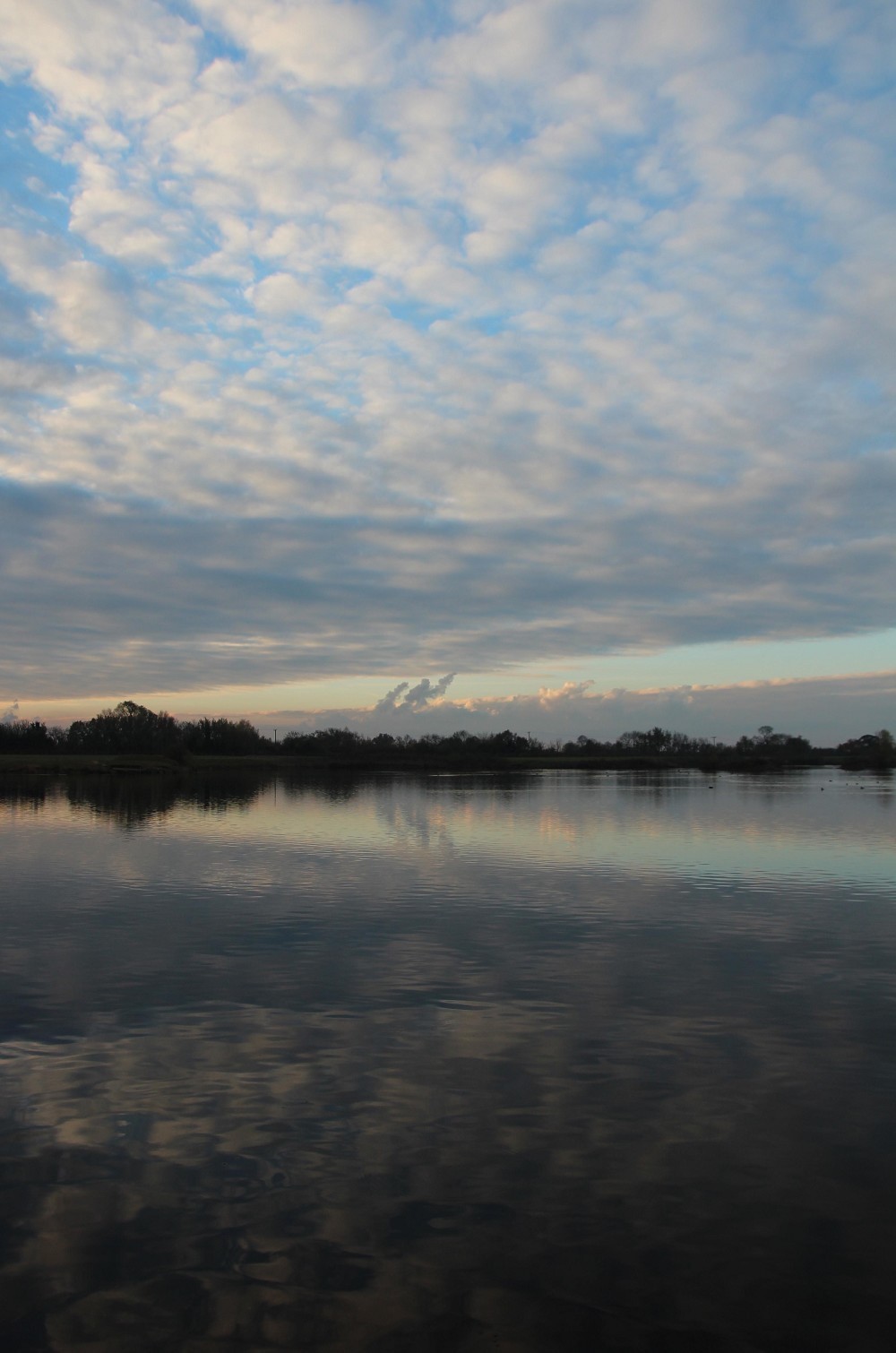 Always keep your eyes peeled on the weather. Spotting a mackerel sky and knowing what it meant allowed me to catch my first brace of 40’s in the UK
Always keep your eyes peeled on the weather. Spotting a mackerel sky and knowing what it meant allowed me to catch my first brace of 40’s in the UKAlthough what I have said in this feature is absolutely correct, you’re not going to catch them at home in front of the telly and there have been days when I thought I couldn’t buy a bite and it’s been a real payday, and others where everything looked sweet but nothing came out to play. So to close I’m going to quote the great master Isaak Walton from The Compleat Angler… “Now be quiet and go a angling”!



